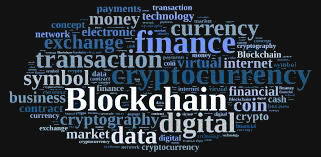





Published on Feb 21, 2020
Ripple is a real-time gross settlement system (RTGS), currency exchange and remittance network created by the Ripple company. Also called the Ripple Transaction Protocol (RTXP) or Ripple protocol, it is built upon a distributed open source Internet protocol, consensus ledger and native cryptocurrency called XRP (ripples). Released in 2012, Ripple purports to enable "secure, instantly and nearly free global financial transactions of any size with no chargebacks." It supports tokens representing fiat currency, cryptocurrency, commodity or any other unit of value such as frequent flier miles or mobile minutes. At its core, Ripple is based around a shared, public database or ledger, which uses a consensus process that allows for payments, exchanges and remittance in a distributed process.
The network can operate without the Ripple company. Among validators are companies, internet service providers, and the Massachusetts Institute of Technology.
Used by companies such as UniCredit, UBS and Santander, Ripple has been increasingly adopted by banks and payment networks as settlement infrastructure technology, with American Banker explaining that "from banks' perspective, distributed ledgers like the Ripple system have a number of advantages over cryptocurrencies like bitcoin."
OpenCoin began developing a new payment protocol called the Ripple Transaction Protocol (RTXP) based on Ryan Fugger's concepts. The Ripple protocol enables the instant and direct transfer of money between two parties. As such the protocol can circumnavigate the fees and wait times of the traditional correspondent banking system, and any type of currency can be exchanged including U.S. dollars, euros, renminbis, Indian rupees, yen, gold and airline miles. To maintain security OpenCoin programmed Ripple to rely on a common ledger that is "managed by a network of independent validating servers that constantly compare their transaction records." Servers could belong to anyone, including banks or market makers. The company also created its own form of digital currency dubbed XRP in a manner similar to bitcoin, using the currency to allow financial institutions to transfer money with negligible fees and wait-time
Ripple's website describes the open-source protocol as "basic infrastructure technology for interbank transactions – a neutral utility for financial institutions and systems." The protocol allows banks and non-bank financial services companies to incorporate the Ripple protocol into their own systems, and therefore allow their customers to use the service Currently, Ripple requires two parties for a transaction to occur: first, a regulated financial institution "holds funds and issues balances on behalf of customers." Second, "market makers" such as hedge funds or currency trading desks provide liquidity in the currency they want to trade in. At its core, Ripple is based around a shared, public database or ledger that has its contents decided on by consensus.[6] In addition to balances, the ledger holds information about offers to buy or sell currencies and assets, creating the first distributed exchange. The consensus process allows for payments, exchanges and remittance in a distributed process.
According to the CGAP in 2015, "Ripple does for payments what SMTP did for email, which is enable the systems of different financial institutions to communicate directly
In Ripple, users make payments between each other by using cryptographically signed transactions denominated in either fiat currencies or Ripple's internal currency (XRP). For XRP-denominated transactions Ripple can make use of its internal ledger, while for payments denominated in other assets, the Ripple ledger only records the amounts owed, with assets represented as debt obligations.
As originally Ripple only kept records in its ledger and has no real-world enforcement power, trust was required. However, Ripple is now integrated with various user verification protocols and bank services. Users have to specify which other users they trust and to what amount. When a non-XRP payment is made between two users that trust each other, the balance of the mutual credit line is adjusted, subject to limits set by each user. In order to send assets between users that have not directly established a trust relationship, the system tries to find a path between the two users such that each link of the path is between two users that do have a trust relationship. All balances along the path are then adjusted simultaneously and atomically. This mechanism of making payments through a network of trusted associates is named 'rippling'. It has similarities to the age-old hawala system
XRP is the native currency of the Ripple network. XRP are currently divisible to 6 decimal places, and the smallest unit is called a drop with 1 million drops equaling 1 XRP. There were 100 billion XRP created at Ripple's inception, with no more allowed to be created according to the protocol's rules. As such, the system was designed so XRP is an asset with decreasing available supply. Not dependent on any third party for redemption, XRP is the only currency in the Ripple network that does not entail counterparty risk, and it is the only native digital asset. The other currencies in the Ripple network are debt instruments (i.e. liabilities), and exist in the form of balances. Users of the Ripple network are not required to use XRP as a store of value or a medium of exchange. Each Ripple account is required, however, to have a small reserve of 20 XRP[114] (US$19.80 as of December 26, 2017). The purpose for this requirement is discussed in the anti-spam section